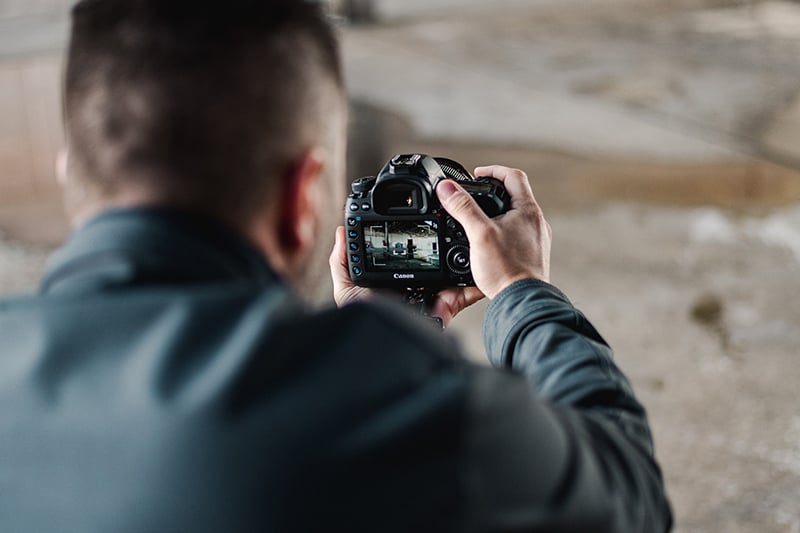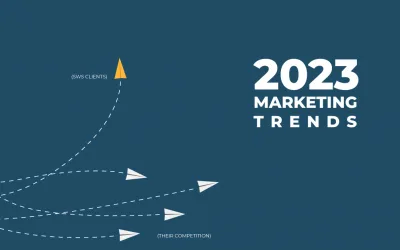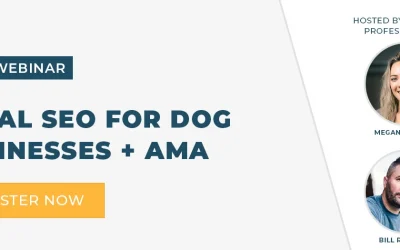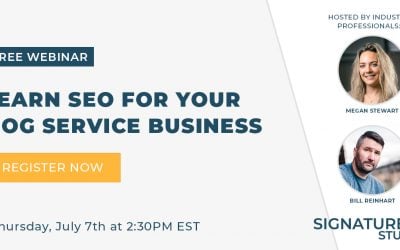My talk at the Charlotte Photography Group
In January 2020 I was invited to give a talk to the Charlotte Photography Group on how to perform SEO on their photography Business websites.
In this talk I covered:
- Why you should Perform SEO
- How to Get Started
- On-Page SEO
- Off-Site SEO
Video Transcript
What’s up everybody? The Charlotte Photography Club earlier in the month asked me to give a talk on search engine optimization as it relates to photography portfolios and photography websites. So I wanted to share that presentation with you all now because it’d be a great resource for any photographer looking to expand their reach through search engine optimization. So without further ado, here we go.
This presentation is all about search engine optimization and photography marketing. How you can optimize your photography blog website or portfolio to increase your overall organic search traffic. So let’s get started with what we’re going to cover during this session. We’re going to cover a lot of high level what is SEO. We’re not going to get too far into the weeds because there is an entire industry regarding search engine optimization. But we will cover several things that you can apply directly in now to improve increase your overall search presence.
We’re also going to cover keyword research and setting up your SEO, technical on page SEO, off site SEO and tools you can use to help your SEO along. So let’s get into what is SEO. SEO is optimizing different factors to appear more favorably in Google search. So a couple things about this phrase. Notice I didn’t specifically say search or search engines. I called out Google specifically and I did that because of these statistics. This is a slide from Rand Fishkin’s internet summit keynote from November 2019 and part of the traffic tracking he did realized that 66% of all referral traffic comes from one source and that is Google. Optimizing for Google gives you an advantage over trying to optimize for multiple different search engines.
I also didn’t mention website. The reason I didn’t mention website, and this is also from Rand Fishkin’s presentation, Google is starting to solve more queries without clicks and everybody notices this. The Google maps and the local reviews are starting to take a more prominent effect in search and the same is happening with how Google is serving up businesses and how they’re actually referring people to you in search. Also, why I didn’t mention rankings in that phrase about what is SEO. I always talk about being more favorable in search. And the reason I talk about this over rankings is Google now handles at least 2 trillion searches per year. Two trillion searches. And of those 2 trillion searches Google affirmed that 15% of those searches are brand new. They’ve never been searched before. So when it comes to all of the different ways that somebody can find you now in search, trying to focus on one or two or five specific keyword rankings could potentially put you behind on the other 100 phrases that someone may find you on.
But why do we do SEO? Why is it something that we need to perform on our photography websites? Non-branded searches. It’s really important to focus on non-branded searches. And what is a non branded search? Something like a service related search or a service related query that doesn’t have your specific brand or name in it. So something like portrait photographer, portrait photographer Charlotte, North Carolina, wedding photographer, wedding photographer Charlotte. Those are different key phrases that are not brand related. And as you can see, the search volume for these are incredibly high. 110,000 monthly searches for portrait photographer. Wedding photographer 135,000 monthly searches. These are very important phrases that you would like to appear in search for. But, we also do SEO for branded searches.
Branded searches are searches that have your brand in it. So business name Charlotte, North Carolina, or just the business name. But what’s so important about branded searches are they make up close to 50% or over 50% of your website traffic. And I encourage everybody to look at the analytics and see how much of their traffic is coming from branded searches. When was the last time you Googled yourself? It’s really important to understand exactly how you’re appearing in search for your own branded queries, not just service related queries. Think about your referrals. I know a lot of businesses, especially in the photography space, talk about referrals and talk about all the different ways that they get business and referrals is probably number one. Chances are your referrals are Googling you to get your contact information for you, see your portfolio. When they search for you, you want to make sure they’re seeing great reviews, great articles about your business.
But now let’s talk about setting up SEO. We know why we need to do SEO. We know what it is. In the first place SEO starts is going to be keyword research. Keyword research powers the way we do SEO because that’s how we understand exactly what we’d like to get found for. So we’re going to start by building a list of your services and what you want to get found for. Go ahead and just start jotting it down on a piece of scratch paper, on an Excel spreadsheet all the different types of photography or all the different services that you want to get found for and use keyword tools to help you identify search volume and variants. It’s really important to understand how much search volume is around a particular phrase so that way you know which phrases to optimize for more heavily than others.
And these search engine tools will also give you new ideas for searches. For example, this is called Ubersuggest. It’s a free tool and I will include all of the links below, but this tool allows you to put in a different keyword and get the search volume for it and show suggestions of other related and question-based keywords and you can put different variations in to get a completely different variation of keywords. Some of those tools that we use regularly, Ubersuggest, Google Keyword planner, Moz Keyword Explorer, Keyword Keg, Answer the public, all great keyword tools that I’ll link below so you have access to.
The next thing you’re going to want to do is group related keywords by topic. This allows you to start to build the site map of your website and understand exactly which services you want to get found for in the keywords related to that search. So you group things together. For example, portrait photography, wedding photography, engagement photography, Charlotte photographers and then you’ll place all of the related keywords underneath those topical groups. Here’s a tip for you. Keep keywords relevant and concise. Also, long tail keywords and lower volume keywords are often less competitive and they’re easier to get found for. So keep that in mind when you’re building your keyword lists.
Once, we build our group of keywords we’re going to build a keyword URL map. A keyword URL map is a document that allows you to track your SEO progress and it allows you to identify which pages of your website are going to be optimized for any set of keywords. So what we’ll do is we will build the keyword URL map with all of the URLs on your website and then the targeted keywords for that URL in a separate column along with the search volume. It’s really important to have identified isolated pages of your website because it’s almost impossible to rank or position one specific key phrase or one specific page for hundreds of keywords. You want to break your website up so it’s not only easy for Google to crawl, but also easy for your users to identify what pages are on your website. But if you want a copy of my keyword URL map, head over to signaturewstudio.com/Charlottephotography and you can request one of my keyword URL maps, plug a URL or plug your email address in there and I’ll send it right off to you.
So now that we know exactly what key phrases we want to optimize our website around, now we need to understand how to optimize our website. First we need to understand how it works. Google uses 200 plus ranking signals to identify which sites rank where they do on Google search. So every time Google indexes or ranks a webpage it tries to evaluate that site on these 200 different variants. And Google doesn’t release what those variants are but they have told the SEO industry that there are two specific optimization factors. The first great content. Content that answers a user’s query that is relevant and semantic to what that person is actually searching for. Does the content on this site answer the user’s question that they’re searching for? The next are links. Back links pointing to your website are the second most important ranking factor when it comes to Google search. How many other websites are pointing back to your website?
So what does each page of your website need? Now we know how Google reads and identifies your website. We know exactly which pages we need to optimize for what keywords. How do we optimize those specific pages? So here’s an example of a page on a website. So what’s you’re going to want to do is take a look at all these individual factors for optimizing your site. The first thing you’re going to want to take a look at is the title tag. The title tag is, think of it as the subject line of your site. You want to make sure that it’s very well optimized. Then take a look at the actual URL of your page. Is it very clear? Does it have a hierarchy? Are there keywords in that URL?
Next thing you want to focus on is a very clean and easy to read navigation structure because Google will crawl your website in the same way that a user does. Next thing we want to have is a very clear headline structure with an H1 headline. H2 headlines that support the H1 headline and very clear and well-written content that also includes internal links and a gallery of your work. You want to showcase the things that you’re capable of and what separates your photography from the next.
For your title tags and meta descriptions always think about what people want to click on when they Google something. Your title tag is what those blue links will appear as in a search results page and you’re going to want to make sure you stay in best practices. Don’t go over 70 characters and stay between the 40 and 70 character mark. Also, make sure your title tag is keyword optimized. Include the high volume phrases that you want to get found for inside your title tag. Just make sure that your title tag is natural. You don’t want to make it seem it’s keyword stuffed or inorganic because you’re trying to entice people to click. You want people to click on your title tags. You want people to navigate to your website from search and you do that through a well-written title tag and description. A great tool you can use is the snippet-optimizer on seomofo.com.
Next an optimized URL structure is really, really nice for Google. You want to make sure that you have keywords in your URLs. Make sure that it’s very clear which pages and where this page fits in your overall site hierarchy and a clean and easy navigation. Make sure that your navigation is very concise. It’s very obvious where people are going to get when they click on a link and then also be direct. Make sure you are very, very direct and obvious with people. You don’t want to make them think about what page this could be on your website.
And the next most important piece is optimized content. Optimized content on your website is very, very important and make sure you’re optimizing it effectively. Use keywords in headlines. Make sure that your headlines have a very clear hierarchy. You should only have one H1 headline in your content. It should be very direct about what this page is about. In this example, wedding photography. Next your H2 headlines and your sub-headlines should reference or discuss subcategories of your parent headline. Break content into sections. It’s very easy to do one big long blurb of content but it’s not easy for a user to read that content. It’s also not easy for Google to read that content, so if you break your content up into easily digestible sections it’s easier for your users and it’s easy for Google to crawl. The next thing you want to do in your content is use internal links.
Link your content from page to page. Google crawls websites in the same way that people do. They use links and if you have more links through your website and through your website content, Google has a better understanding of the relationships between pages and also use keywords in your content. Make sure that you’re using the keywords that we found in the keyword URL map in the content of your page. Just don’t over optimize. You want to make sure the keywords you’re using within your content is natural. You don’t want to over optimize a website or stuff keywords in where they don’t belong. You run the risk of penalty in that instance if you over optimize.
So what content does your page need? When it comes to writing content you want to write whatever your users want to know. Google wants to serve up the best possible result for their users, which are the searchers. So when it comes to writing content for your page a couple of things that are helpful. Tell us about your process. Let us know why you are better than other photographers in the area or in the space. How does a shoot work? How does pricing work? Tell us about your experience and how long you’ve been doing this and then also think about what questions do your clients ask you. Answer them on your page. If those people are asking you these questions when they’re calling you and qualifying you as their next photographer, go ahead and beat them to the punch and put that content on your website. Google will appreciate that and potentially rank you higher for those things.
Now we talked about offsite SEO. These are things that are very, very important and the most important part of SEO is what happens off of your website. Things that don’t even take place on your actual portfolio or company website. And backlinks are one of the most important things here and backlinks are links pointing from another site to your site, so any of the other links from other websites that are pointing to your page. And the best way to get them, find sponsorships, find other places where you can sponsor content or sponsor activities or sponsor different events that would get that page to link to your website.
Also, look for existing mentions of your brand. Google yourself and find other websites that are referencing you and ask them for that link. You can also contribute content to publications if you want to contribute photos or contribute different writing or different samples to a different blog or website. You can get links back to your website and that’s also very helpful and the best way to do it is to ask for links. If you want a link back to your website find somewhere that makes sense to get a link from and ask them to link to your page.
Citations are also extremely important for SEO. The citation is validating your business across the web, so a citation is a directory. It is what proves to Google and all of the search engines exactly what your business is, where it fits and that it is legitimate. So directories like Yellow Pages or Yelp or industry specific listings like the Knot or Wedding Wire. And then how to get them, use citation services. It is very easy. There’s two that are great. One is called Yext and the other is called WhiteSpark. Yext is very good because it automatically publishes you in directories and it has a lot of different other value adds to their service. It is a bit pricey. It’s not a free service and then there’s WhiteSpark. WhiteSpark is a onetime payment per citation they put you in or per directory they put you in. It’s a really helpful tool because they also will help you focus on niche directories and the next way to get them is just manually. Go out and build a list of directories that you would like to be placed into and manually add yourself to them.
Next up for off site is a Google My Business page. Every business should have a Google My Business page. It is the only way you’re going to get found in the local map listings. Best way once you get your Google My Business page up and running is to optimize it. Optimizing it with the different services you offer, your hours of operation. Get reviews to your Google My Business as well. Make sure you are asking people that are satisfied with your service to leave you reviews. Google loves to position people higher that have lots of reviews and then also post images of your work. Google loves it when you’re very active within your Google My Business page. Including images of your work and the different things that you do will really help Google know what you do and position you higher.
But some of the tools that you’re going to need to work with and there’s three really important ones. Google Analytics, Google Search Console and SEO Screaming Frog. The first, Google Analytics will allow you to track activity on your website and monitor progress. You’ll be able to see how your traffic is improving after you’ve implemented some of these changes and Google Search Console is a tool that is also free along with Google Analytics that will allow you to identify site problems and see search visibility. You’ll be able to see what keywords your site is actually getting found for when people search them in Google.
And the next tool is SEO Screaming Frog. There is a free version of this tool and there is also a paid premium version. The free version is very, very helpful. It’ll allow you to crawl your website to identify any issues and actually make sure that you have it set up in the best way possible. If you’d like, you can send me your crawl and export your crawl and submit it for feedback. Go ahead and head over to signaturewstudio.com/Charlottephotography and submit your crawl. I will go ahead and I will provide you feedback on your crawl based on the things that I’ve seen and some of the evaluations that I can provide, but I look forward to seeing what you have to send me.
But some additional tools that are really helpful and I will link all of these below. For keyword research, there’re Keywords Everywhere, Google Keyword Planner, Ubersuggest and Moz Keyword Explorer. I’ve reviewed some of these already but there’s also technical tools which are really helpful. SEO Meta Explorer is a Chrome extension that you can just plug in Chrome and it will allow you to audit your pages live. SEO Screaming Frog, which we just talked about. SEO Quake, which is a helpful tool, also a Chrome extension and Moz Bar, which is again a Chrome extension that allow you to audit your website to make sure you have all the important pieces and they will also provide you optimization suggestions. A helpful tip here, you can also use these extensions to spy on your competition’s portfolios.
And then the last tool, SEO Mofo Snippet Optimizer. This allows you to write the best and most optimized title tags and meta descriptions. Campaign management is a very important piece. These tools unfortunately are not free but they do allow you to monitor the process of your campaign and see how well you’re doing in search. And two great tools for that are Moz and SEMRush. And competitive research and backlinks. A great way to identify which backlinks are out there and then other ways to see which websites are already linking to you are Majestic and AHREFs. Both of these tools will not only allow you to crawl your own websites to get back links but also allow you to plug your competition’s websites into these tools to see which websites are linking to them.
So to put it all together, keyword research, start understanding what keywords you’d like to get found for, build content around those keywords and then build links back to your website that approve the authority of your overall portfolio.
Thank you for your time. Please don’t hesitate to visit signaturewstudio.com/Charlottephotography. You can also submit for my keyword URL map there and I’ll email it right to you. And you also have the ability to send me your Screaming Frog crawl and I will send you feedback and give you advice to what you can do for your website. And then here are all my different contact pieces. Feel free to follow me, subscribe. I will link everything as well as the tools that I covered in the links below. Thank you for your time.




